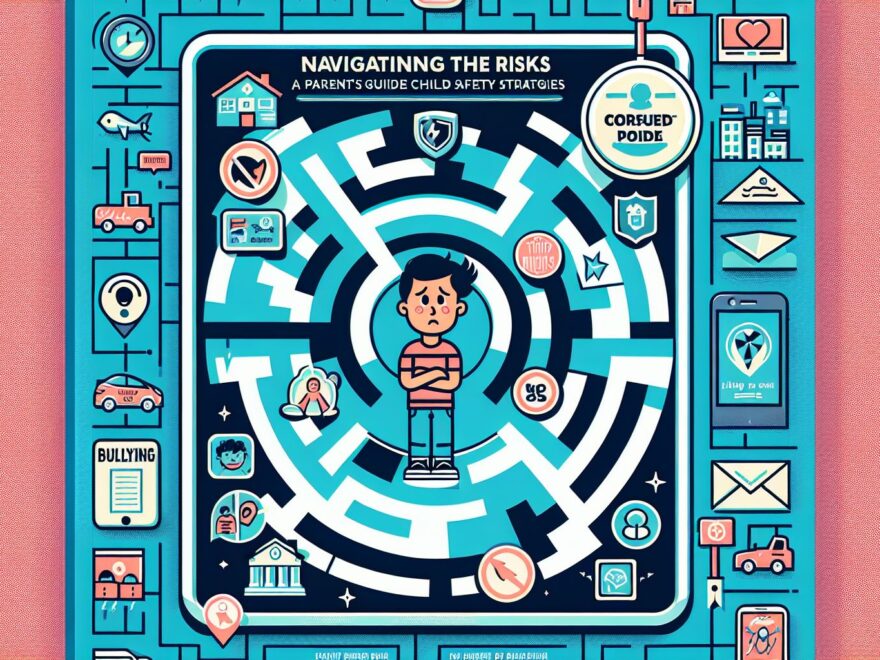As the world evolves, so do the challenges associated with keeping our children safe. The concerns that weigh on the minds of parents and guardians range from physical dangers in the real world to the intangible threats lurking within the digital realm. With the proliferation of internet access and the increasing autonomy of young people in both public and private spaces, ensuring the safety of our children has become a complex task that requires knowledge, vigilance, and actionable strategies. This article aims to offer valuable insights into child safety, empowering you with practical stories approaches for safeguarding your little ones wherever they may be.
 Protecting Our Most Precious: Strategies for Child Safety Across Environments
Protecting Our Most Precious: Strategies for Child Safety Across Environments
Child safety is a multi-faceted issue that demands attention to detail and a proactive stance. The modern age presents a plethora of environments where children need protection, and below, we’ll journey through practical tips that can help secure their well-being.
In the Real World: Vigilance and Education
In physical environments, whether it’s at home, school, the park, or the mall, the principles of vigilance and education stand as the bedrock of child safety.
- Know the Surroundings: Familiarize yourself with the areas your child frequents. Understanding the layout, the type of people who visit, and the overall safety can help you assess risks.
- Teach Awareness: Encourage your children to be observant and to trust their instincts. Reminding them to be aware of their surroundings and to look for trusted adults when they feel uneasy can be lifesaving.
- Establish Check-ins: Regular communication with your child is crucial. Have predetermined check-in times or establish a code word for situations where they might feel unsafe.
- Practice Stranger Awareness: While the adage “Don’t talk to strangers” still holds, it’s also essential to teach children about ‘tricky people’ — adults who may attempt to coerce rather than outright abduct.
Navigating the Digital Landscape: Supervision and Control
The virtual world presents a different set of risks. Online, children can encounter inappropriate content, cyberbullying, or online predators. Here are ways to address these challenges:
- Set Boundaries: Implement rules for internet use, which include time limits and approved websites. Clearly communicate the reasons behind these rules to your child.
- Utilize Parental Controls: Take advantage of the many tools and applications designed to monitor and restrict content, ensuring your child only accesses age-appropriate material.
- Open Conversations: Foster a transparent dialogue about online safety. Make it comfortable for your child to report anything inappropriate they encounter without fear of punishment.
- Educate About Personal Information: Stress the importance of privacy by teaching your children never to share personal information online, such as their full name, address, or school.
Resources at the Ready: Tools Parents Can Trust
Fortunately, there are resources available to empower parents in the quest for child safety:
- Mobile Apps: GPS-tracker apps allow you to monitor your child’s location while they’re out and about.
- Online Platforms: Explore protective software that reports on your child’s browsing habits or that filters out harmful content.
- Community Programs: Engage in community safety programs, such as neighborhood watches or safety workshops, which can be instrumental in reinforcing safety tactics.
Safeguarding Innocence: Summing Up Child Safety Strategies
The narratives of our lives often do not come with roadmaps, but in the realm of child safety, we can navigate the dangers with the compass of education, supervision, and the right resources. By instilling awareness in our children and employing the tools at our disposal, we not only protect them from harm but also empower them to become conscious, responsible individuals. Child safety is not a destination but a continuous journey—one that requires our unyielding attention and commitment. As caretakers of the next generation, let’s pledge to arm ourselves with the necessary strategies, so our children can explore, learn, and grow within the embrace of a safer world.

